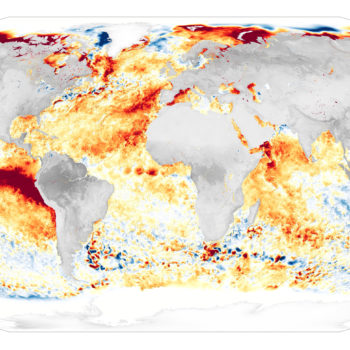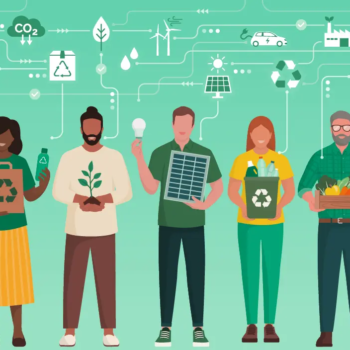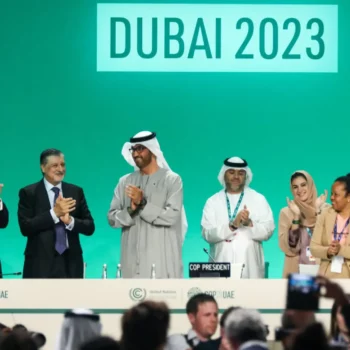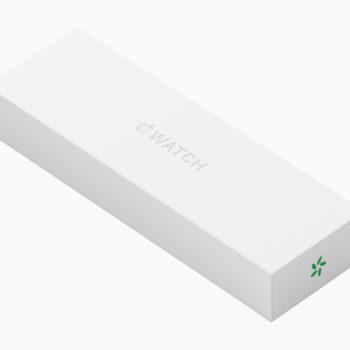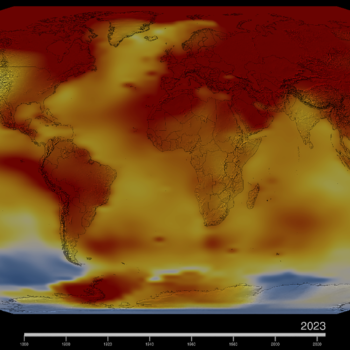|
|
In a move to further combat packaging waste and promote environmental sustainability, the European Union parliament’s representatives and the council presidency on the Regulation on Packaging and Packaging Waste have reached a provisional agreement on new rules for more sustainable packaging.
The European Parliament and Council’s agreement in revising its rules pertaining to packaging and packaging waste establishes new and challenging guidelines for the sustainable management of packaging and packaging waste across the EU, aligning with its goal of creating a low-carbon, circular economy.
Main Elements of the Agreement
The provisional deal is a welcome move in waste reduction and recycling efforts. It maintains most of the Commission’s originally proposed sustainability requirements for all packaging and headline targets.
The agreement includes the following primary components in addition to the ban on PFAS, or “forever chemicals,” for contact-sensitive food packaging by 2026:
Mandatory Reuse Targets
By 2030, the EU mandates significant increases in the reuse of packaging materials (at least 10%), aiming to transition away from single-use packaging. This includes ambitious reuse targets for specific sectors, such as the food and beverage industry. Under specific circumstances, member states may grant a five-year exemption from these rules.
Take-away businesses must offer customers the option to use their containers for beverages and food by 2030. 10% of products must be available in reusable packaging formats by this time. Member States must then provide incentives to food establishments and catering services to supply tap water in reusable or refillable formats, either for free or at a small service charge.
Recycling Innovations
The agreement stipulates increased recycling targets for various materials, including plastics, metals, and paper, by 2030 and 2040. There are specific exceptions planned for lightweight materials like wood, cork, textiles, rubber, ceramics, porcelain, or wax.
The new rule also encourages innovation in recycling technologies and increased use of reusable packaging. Member states must guarantee the separate collection of single-use plastic bottles and metal beverage containers by 2029, with a minimum of 90% annual collection required. To meet that goal, they must build up deposit return systems (DRSs) for those packaging formats. Exemptions apply for systems already meeting this target by 2029 or with a separate collection rate above 80% by 2026.
Reduction of Packaging Weight and Volume
Manufacturers will be required to minimize the weight and volume of packaging without compromising functionality and quality, promoting the use of lightweight materials and efficient design.
Ban on Certain Single-Use Packaging
Specific types of single-use plastic packaging will be banned by 2030, focusing on reducing the environmental impact of plastic packaging waste and encouraging the use of recyclable packaging. That includes packaging used for fruits, vegetables, food, and beverages, as well as for condiments and sauces within the HORECA sector. Additionally, restrictions apply to small cosmetic and toiletry products utilized in the accommodation sector, like shampoo or body lotion bottles, and to extremely lightweight plastic bags commonly found at bulk grocery markets. Likewise, the rule calls for the retail sales of single-use plastics in cafés and restaurants to be prohibited by 2030 to encourage reusable alternatives.
The Council of the EU provides more in-depth information about the main elements of the agreement.
Following the Council’s agreement, Rapporteur Frédérique Ries (MR, Belgium, Renew Europe) encapsulated the sentiment behind the agreement, saying:
“For the first time in environmental legislation, Europe is setting clear targets for reducing packaging consumption, regardless of the material used (plastic, wood, ferrous metals, aluminium, glass, paper and cardboard). We call for efforts from all industrial sectors, but also from the Member States, but we also wanted the consumer to play a role in this fight against overpackaging. We have sent a strong message in favor of a more virtuous European packaging market that respects food safety. This is why the ban on persistent PFAS chemicals is a big victory for the health of European consumers. But it was also essential that environmental ambitions meet industrial reality with an agreement that promotes innovation, postpones for 5 years restricting certain packaging formats, for fresh fruit and vegetables, and above all provides for a certain number of exemptions for micro – businesses.”
Legal Challenge Against Packaging and Packaging Waste Regulation (PPWR)
Not everyone shares the same sentiment as Ries, however. Since the PPWRs draft was leaked in November 2022, it has faced scrutiny and challenges from various stakeholders within the packaging industry.
Critics, which included industry players across the EU packaging production industry, argued that the regulation could impose significant financial burdens on small and medium-sized enterprises (SMEs) and may lead to increased consumer costs. Additionally, concerns have been raised about the feasibility of meeting the ambitious targets set by the regulation, particularly regarding recycling and reuse.
They further added that in the worst-case scenario, trade flows within the industry and EU supply chains could be disrupted to the point where entire sectors collapse. Recycling is said to be disregarded as a component of packaging circularity, which makes it difficult to convert waste into economically viable secondary packaging.
Hence, it might jeopardize current packaging procedures, endanger employment, and risk wasting billions of euros’ worth of investments “at a time when Europe needs resilient and sustainable growth.”
However, the EU Parliament and Council have defended the PPWR, stating that it includes provisions to support businesses during the transition to more sustainable practices. This includes exemptions for certain types of packaging and financial incentives for companies that innovate in the field of sustainable packaging.
The latest effort to revise the original proposal has also triggered a negative response from the fresh produce industry, especially with regard to the proposal’s prohibition on plastic fruit and vegetable packing.
According to a report by Fruitnet, industry executives claim the regulations will cause significant harm and unfairly single out the fruit and vegetable sector. Additionally, they contend that it will limit consumer access to wholesome food, increase food waste, and have no appreciable effect on recycling rates overall, underlining the complexity of revising rules to reduce packaging waste.
Fruitnet was informed by Philippe Binard, general delegate of Freshfel Europe, that the prohibition was discriminatory, ill-conceived, and most likely illegal, reflecting tensions in the legislative process for sustainable packaging. Binard noted:
“We don’t see a reason to ban packaging for fruits and vegetables, specifically not plastic packaging for fruits and vegetables. There is no impact assessment. If [Parliament and Council] come to an agreement, there will be legal cases challenging that proposal for sure.”
As the European Union’s provisional agreement on packaging waste regulation garners criticism, particularly from packaging producers, suppliers, and users of their products, it is imperative for the EU Parliament and Council to adopt a multifaceted approach to address these concerns effectively and the political will behind PPWR’s implementation. The objective should be to harmonize environmental aspirations with economic realities, ensuring the transition to substitution to or away from plastic packaging is both inclusive and pragmatic. Here are several steps that could be taken to mitigate criticisms and foster a collaborative environment:
Strengthen Stakeholder Engagement
- Structured Dialogues: Establish regular, structured dialogues with industry stakeholders, including SMEs, to gather feedback, understand the challenges faced by different sectors, and adopt regulations as necessary.
- Co-creation Workshops: Facilitate co-creation workshops where producers, recyclers, and policymakers can jointly develop innovative packaging solutions that meet regulatory requirements while being economically viable.
Enhance Support and Incentives
- Financial Support: To invest in sustainable packaging technologies and practices and encourage avoidance of unnecessary packaging, provide targeted financial support to businesses, especially SMEs. This could include grants, low-interest loans, and tax incentives for research and development (R&D) in eco-friendly packaging materials and designs.
- Technical Assistance: Offer technical assistance programs to help companies navigate the transition, such as guidance on alternative materials, design for recyclability, and efficient production processes.
Implement Phased and Flexible Regulations
- Gradual Implementation: Introduce a phased approach to the implementation of new packaging regulations, allowing industries time to adjust. This could involve setting progressive targets for the reduction, reuse, and recycling of packaging materials.
- Flexibility for SMEs: Consider flexibility in the application of certain regulations for SMEs, recognizing the disproportionate impact these could have on smaller businesses. Tailored thresholds or extended compliance timelines could be part of this flexibility.
Foster Innovation and Research
- R&D Investments: Increase investment in research and development for sustainable packaging solutions. This includes supporting innovation in material science, recycling technologies, and product design that reduces environmental impact.
- Innovation Hubs: Create or support innovation hubs that bring together researchers, entrepreneurs, and industry experts to accelerate the development of sustainable packaging technologies.
Promote Consumer Awareness and Participation
- Educational Campaigns: Launch comprehensive educational campaigns to raise consumer awareness about the importance of sustainable packaging and how consumers can contribute to a circular economy.
- Incentivize Consumer Behavior: Develop incentive programs that encourage consumers to choose reusable and recyclable packaging options, such as deposit-return schemes for beverage containers.
Enhance International Collaboration
- Global Standards: Work towards the development of international standards for sustainable packaging to facilitate trade and ensure that European businesses remain competitive in global markets.
- Sharing Best Practices: Engage in international forums to share best practices, learn from other regions’ experiences, and collaborate on global challenges related to packaging waste and recycling.
A Brief Overview of the Packaging and Packaging Waste Regulation (PPWR)
The Packaging and Packaging Waste Regulation (PPWR) establishes policies to encourage packaging reuse and other forms of recovering packaging used for various purposes while preventing the generation of packaging waste.
In addition to reducing packaging waste, PPWR requires that progressively less plastic made from fossil fuels be used in EU plastic packaging. Some of their need will be replaced by recycled plastic and flexible packaging options. Depending on the use, plastic packaging in the EU must include 10–35% recycled content by 2030. The percentages increase to 50–65% by 2040. Put another way, by 2040, more recycled plastic than virgin plastic should be used in EU packaging.
According to the European Commission, despite the fact that the introduction of these regulations has been deemed successful, the EU’s packaging waste is still rising, and a lot of the region’s resources are being wasted without being reintroduced into the economy. Hence, revisions and amendments are continuously being made regarding laws on packaging.
The Issue of Plastic Packaging in the EU
EU’s plastic packaging represents a significant challenge within its waste management framework. Despite recycling efforts and fully functioning recycling systems throughout the regio, a substantial portion of plastic packaging ends up in landfills or incinerators, contributing to pollution and greenhouse gas emissions.

Image Source: https://ec.europa.eu/eurostat/web/products-eurostat-news/w/ddn-20231019-1/
According to data from Eurostat, the EU produced 188.7 kilograms of packaging waste per resident in 2021—10.8 kg more than in 2020, the largest increase in ten years, and about 32 kg more than in 2011.
Paper and cardboard comprised 40.3% of the 84 million tons of packaging waste produced in the EU. 19.0% came from plastic, 18.5% from glass, 17.1% from wood, and 4.9% from metal, highlighting the urgent need for sustainable packaging in the EU.
Each resident of the EU produced 35.9 kilograms of garbage from plastic packaging on average in 2021. Only 14.2 kg of this were recycled.
Eurostat data also revealed that the recycling rate decreased from 41.1% in 2019 to 37.6% in 2020 as a result of tougher regulations that year that mandated member states to disclose their recycling. At 39.7% in 2021, the recycling rate resumed its upward trajectory.
Half, or nearly half, of the plastic packaging waste generated in 2021 was recycled in Slovenia (50.0%), Belgium (49.2%), and the Netherlands (48.9%). In comparison, Sweden (23.8%), France (23.1%), and Malta (20.5%) recycled less than 25% of their waste plastic packaging.
Conclusion
The provisional deal on new rules for more sustainable packaging in EU marks a critical step forward in the fight against packaging waste and the transition towards a circular economy. By setting ambitious targets for reuse and recycling, banning certain types of single-use plastic packaging, and promoting innovation in the packaging sector, the EU is positioning itself as a global leader in environmental sustainability, providing a sustainability management blueprint for other countries.
However, as the EU moves towards implementing these new rules, it is clear that the success of the PPWR will depend on the collective effort of member states, businesses, and consumers. The transition to more sustainable packaging practices presents challenges but offers a unique opportunity to innovate, reduce environmental impact, and pave the way for a greener future.
Some Questions Related to EU’s Provisional Deal
The EU has reached a provisional deal to boost packaging sustainability.
The deal aims to reduce EU packaging waste by 15 billion across the region and increase the recyclability of packaging by 2030.
The agreement is expected to be fully implemented by 2024. However, as the deal is provision, it must be formally adopted by both institutions to take effect.
Packaging customers can expect more lightweight plastic carrier bags and improved recyclability of packaging materials.
The deal covers alcoholic and non-alcoholic beverages, toiletry products, and any additional materials used in packaging.
MEPs must agree on the Packaging and Packaging Waste Directive (PPWD) for the deal to come into effect.
The deal is in line with the EU’s goal to reduce packaging waste and increase recyclability as part of its broader sustainability efforts.
The success or failure of the deal could hinge on factors such as the cooperation of member states, the effectiveness of recycling infrastructure, and public awareness campaigns.



